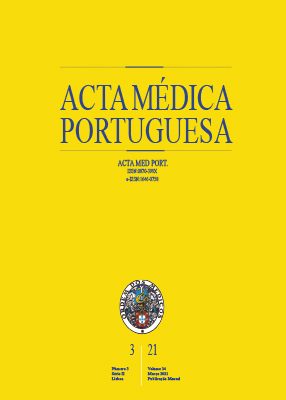Benzodiazepine Use in Opioid Maintenance Treatment Programme: Risks and Clinical Outcomes
DOI:
https://doi.org/10.20344/amp.13181Keywords:
Benzodiazepines, Buprenorphine, Methadone, Opiate Substitution TreatmentAbstract
Introduction: The co-association of benzodiazepines and opioids is associated with an increased risk of overdose, death, and poorer psychosocial prognosis. The aim of this study is to characterize the prevalence, pattern of use, and primary clinical outcomes in benzodiazepines users in a public opioid maintenance treatment unit.
Material and Methods: We conducted a cross-sectional study involving 236 patients treated with opioid substitutes (methadone and buprenorphine). We conducted a descriptive, bivariable, and multivariable analysis to determine clinical differences between benzodiazepines users and non-users.
Results: The prevalence of consumption of benzodiazepines was 25.4% (60). The benzodiazepines were obtained with a medical prescription (49.8%) or on the black market (42.6%). The most prescribed benzodiazepine was diazepam (29.1%), and the main reasons were to relieve insomnia (27.7%) or anxiety (26.9%) and to enhance the psychoactive effects of other drugs (19.7%). Regarding the clinical outcomes, we highlight: a very high prevalence of hepatitis C (51.7%); severe ongoing consumption of psychoactive drugs (73.7%); and a high rate of depression and anxiety (> 60%), significantly higher in the benzodiazepines-user group. In the multivariable analysis of benzodiazepine use, we found alcohol consumption (OR 0.482; IC 95% 0.247, 0.238) had a negative association and having hepatitis C (OR 2.544, IC 95% 1.273, 5.084) or anxiety symptoms (OR 5.591; IC 95% 2.345, 13.326) had positive associations.
Discussion: Our results suggest the BZD users had a complex drug addiction problem and underline the importance of adequately addressing BZD use, contemplating psychological and psychiatric approach in this particular population.
Conclusion: Past or current use of benzodiazepines is associated with poor clinical and psychiatric outcomes. A multidisciplinary approach with a focus on infectious diseases and mental health is critical in order to enhance the treatment effectiveness and overall prognosis.
Downloads
Downloads
Published
How to Cite
Issue
Section
License
All the articles published in the AMP are open access and comply with the requirements of funding agencies or academic institutions. The AMP is governed by the terms of the Creative Commons ‘Attribution – Non-Commercial Use - (CC-BY-NC)’ license, regarding the use by third parties.
It is the author’s responsibility to obtain approval for the reproduction of figures, tables, etc. from other publications.
Upon acceptance of an article for publication, the authors will be asked to complete the ICMJE “Copyright Liability and Copyright Sharing Statement “(http://www.actamedicaportuguesa.com/info/AMP-NormasPublicacao.pdf) and the “Declaration of Potential Conflicts of Interest” (http:// www.icmje.org/conflicts-of-interest). An e-mail will be sent to the corresponding author to acknowledge receipt of the manuscript.
After publication, the authors are authorised to make their articles available in repositories of their institutions of origin, as long as they always mention where they were published and according to the Creative Commons license.









